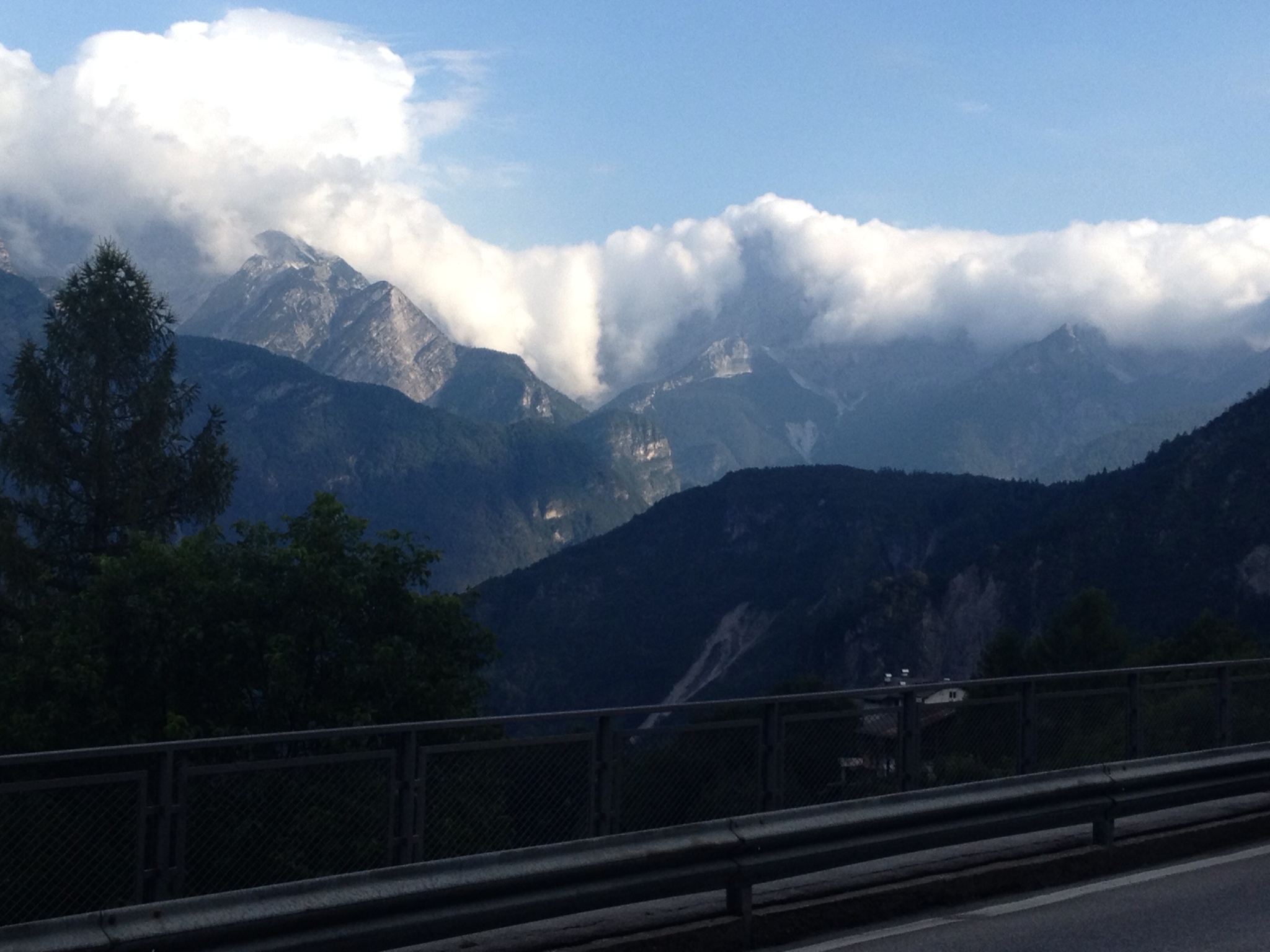The Dolomites are a subset of the Alps, located in far northeast Italy hard against the Swiss/German/Austrian border. It has been a land betwixt and between since well before the Roman Empire and has seen the ebb and flow of many would-be conquerors. As a result, 4 languages are spoken in the region–Italian and German predominate today–and the cuisine has seriously mixed heritage, not necessarily to its benefit according to cyclists’ reports. The rugged terrain and subsistence-level economic output continue to ensure the Dolomiti region’s relative independence, although it has been recognized as part of Italy since World War 1.
The Dolomites’ geology is unique among the Alps in that it was once a seabed. About 70 million years ago, “endogenous forces” (sorry, don’t know what that means!) began lifting up the seabed, losing the water, and then for the last 25 million years, Africa has come calling, crushing the former seabed between it and Eurasia (“plate tectonics”) and turning the various seabed stria on edge. So basically, the Dolomites are broken pieces of an ancient seabed, flipped on edge, much like crushed sheet ice smashed between icebergs and the Antarctic coast.
The resulting “sublime architecture” of limestone spires has inspired painters and photographers throughout history. Except that the ripped stone forms aren’t exactly limestone. This fact was discovered by Guy Dolomieu, a French geologist, in the late 18th century. Common limestone is calcium carbonate, chemically, but these mountains are calcium MAGNESIUM carbonate–a special form. Thus, they became known as The Dolomiti, named after the geologist who identified the stone composition.
What does this mean for the cyclist? A couple things. Africa is still slamming into Eurasia, meaning the Dolomites are getting taller. This will undoubtedly be an observable fact to us pedaling up the Gavia. On the other hand, magnesium is an essential element for energy combustion within muscles, and especially important for endurance. In essence, we will be surrounded by an “energy field” and the simple act of licking the stone just MIGHT chase away fatigue.
The main effect for the cyclist though–and only proven one–is that we will be surrounded by beauty, and beauty is a well-known palliative for fatigue. As Rich “Missing-in-Action” Enthoven would exclaim half-way up a mountain, “Now THIS is QUALITY??!!”





Looks like a great place to begin!